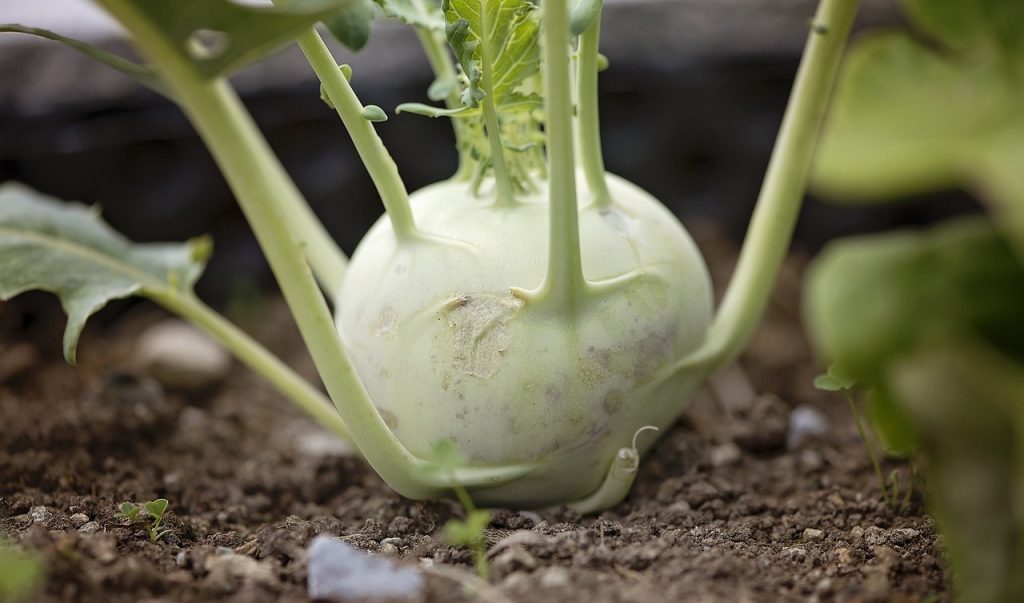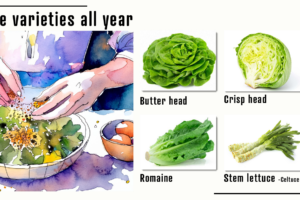
Why you should add kohl rabi to the plants you grow in your vegetable garden?
Brassica oleracea var. gongylodes
This was the first year I have ever grown kohl rabi, it’s a vegetable that has never been on the menu. However, curiosity is a joy and another joy is growing new things. I’ve done some research and asked people who do eat it, what they think.
In this post I’d like to answer the following question
Why you should add kohl rabi to the plants you grow in your vegetable garden?
Let’s get some variety in our diet
Growing a variety of foods fits well with our goal to educate whānau to grow their own food. We need to shift the reliance we have on supermarkets supplying staple foods at ridiculous costs. One way to combat high food reliance costs is to diversify our diet.
Here’s what I found out about kohl rabi.
In temperate regions of New Zealand, kohl rabi is best sown between October and March. Seeds will struggle in the coldest months of the year. If you start your seeds inside it is possible to grow kohl rabi right throughout the year.
In my first season of growing kohl rabi I discovered that it needs lots of good compost. It is a hungry feeder like all other brassicas. The similar appearance is has to root vegetables like turnips is what confused my senses. I was delighted to discover that eating raw kohlrabi is nothing like eating a raw turnip.
General planting guide (based on a temperate climate)
Kohlrabi | JAN | FEB | MAR | APR | MAY | JUN | JUL | AUG | SEP | OCT | NOV | DEC |
SOW |  |  |  |  |  |  | ||||||
TRANSPLANT |  |  |  |  |  |  | ||||||
HARVEST |  |  |  |  |  |  |
Sowing
Sow seeds about 5 cm apart. Germination will occur between 7-24 days.
Transplant
6-8 weeks
Spacing when transplanted
Needs about 30 cm
Harvest
7-10 weeks
Where does Kohl Rabi originate from?
Kohlrabi is believed to have originated in Northern Europe, most likely in Germany. It is a cultivar of the wild cabbage plant and has been cultivated for centuries. Kohlrabi is commonly used in various cultures, particularly in European and Asian cuisines. In Germany, it is a popular vegetable and is often used in traditional dishes such as kohlrabi soup and kohl rabi salad. It is also widely used in Eastern European cuisines, including Poland and Russia. In Asian cuisines, kohlrabi is commonly used in India, where it is known as “knolkhol” or “navalkol,” and is used in curries, stir-fries, and pickles. It is also used in Chinese, Korean, and Thai cuisines, where it is often included in soups, stews, and vegetable dishes. Overall, while kohlrabi is primarily associated with European and Asian cuisines, it is enjoyed in various cultures around the world.
Varieties
In New Zealand, the two major varieties of kohl rabi are the green and purple. Here is a description of each variety along with their culinary uses:

Green Kohl rabi
The green kohlrabi variety has a pale green outer skin and a crisp, white flesh. It has a mild, sweet flavor with a hint of cabbage and radish. This variety is commonly used for both raw and cooked preparations.
Culinary uses of green kohl rabi include:
Raw: Enjoy green koh rabi raw in salads and slaws. Thinly slice or julienne for vegetable platters or mix with other crunchy vegetables as a refreshing and healthy snack.
Roasted: Roast green kohl rabi in the oven with olive oil, salt, and pepper. The roasting process brings out its natural sweetness and softens its texture.
Stir-Fried: Thinly slice green kohlrabi in a stir-fry with other vegetables and sauces for a quick and nutritious side dish.
Mashed or Pureed: Cook as a mash with butter, garlic, and herbs. Create a creamy and flavorful side dish, similar to mashed potatoes.

Purple Kohlrabi:
The purple kohl rabi variety has a vibrant purple skin and a pale yellowish flesh. Common purple varieties in NZ include Azure star and Vienna. Although a sweeter and slightly milder flavor compared to the green variety it adds an attractive visual element to dishes.
Here are some culinary uses of purple kohl rabi:
Raw: Make raw salads adding a pop of color and texture. Its mild flavor pairs well with various dressings and ingredients.
Pickled: Purple kohl rabi adds vibrancy and color to pickles and enhances the flavor. Use pickled kohlrabi in sandwiches, as a tangy side dish, or as a topping for tacos and burgers.
Roasted: Roasting brings out its natural sweetness and develops a caramelized flavor.
Gratin or Casserole: Slice it to layer a gratin or casserole dish. Add other vegetables, cheese, and cream for a rich and flavorful baked dish.
Use both varieties of kohl rabi interchangeably in your recipes, whether raw, cooked, or preserved. Experimenting with this versatile vegetable can bring a unique and delicious touch to your culinary creations.
Nutritional value of Kohl rabi
The nutritional values of kohl rabi per 100 grams are as follows:
Fat: 0.1 grams Fibre: 3.6 grams Carbohydrate: 6.2 grams Energy: 27 calories Protein: 1.7 grams
Mineral composition
- Potassium: Kohl rabi is a good source of potassium, essential for maintaining proper heart function. It assists in regulating blood pressure, and supporting the muscular and nervous system.
- Vitamin C: Kohl rabi is rich in vitamin C, an antioxidant that helps protect the body from free radicals. It helps in boosting the immune system, and promotes collagen production for healthy skin, bones, and connective tissues.
- Fiber: Kohl rabi contains a significant amount of dietary fiber for digestion and regular bowel movements. It also helps control blood sugar levels.
- Vitamin B6: A good source of vitamin B6, necessary for brain development and function. It also assists the production of red blood cells, antibodies, and neurotransmitters.
- Copper: Is involved in enzymatic reactions, iron absorption, and the production of red blood cells.
- Manganese: Kohlrabi contains manganese, which is important for bone health, metabolism, and the production of collagen and antioxidants.
- Calcium: Kohl rabi contains calcium, which is essential for maintaining strong bones and teeth, regulating muscle contractions, and supporting nerve function.
- Iron: Kohl rabi provides some iron, which is necessary for the production of hemoglobin and oxygen transport in the body.
- Vitamin B2 (Riboflavin): For energy production, cell growth, and the maintenance of healthy skin and vision.
- Vitamin B3 (Niacin): This plays a role in energy metabolism, DNA repair, and the production of various hormones.
For a full breakdown of kohlrabi nutritional value view information at this link from the USDA.
Summary
I’m so new to kohl rabi that I wasn’t even spelling it correctly for most of this post. I was pleased at how versatile this vegetable can be and surprised with the depth of nutritional value. I’ll be adding Kohl Rabi to my regular seed starting schedule and I hope you now understand Why you should add kohl rabi to the plants you grow in your vegetable garden?



